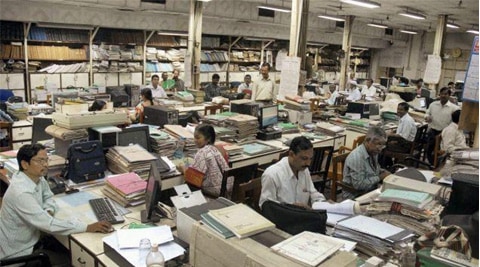Soon, attendance of govt staff to be tracked online

A search for any registered employee yields complete details, along
with the employee’s attendance/leave status. (Source: PTI)
Summary
The Modi government had recently directed all
central government offices to introduce Aadhaar-based biometric
attendance systems.
Though the website, attendance.gov.in, is still in the process of being developed, officials said it is expected to be modelled on the lines of similar websites of the Jharkhand government and the Department of Electronics and Information Technology.
To illustrate, the home page of the Jharkhand government’s attendance website gives the total number of employees present on the given day, along with graphical representations of “real-time attendance” and statistics on the percentage of people logging into office during different time slots, giving an idea of how many officials come to office during the designated timings. Further, a search for any registered employee yields complete details, along with the employee’s attendance/leave status.
Officials said the Centre’s website is likely to emulate most of these features and is expected to be as open to the public. “This level of open tracking takes transparency to another level, a key focus of this government,” said an official.
The Narendra Modi government had recently directed all central government offices to introduce Aadhaar-based biometric attendance systems. Officials said this website is the next step in that direction. The attendance record entered on the biometric devices in government offices will feed the data to this website, which will act as a centralised management information system (MIS) for attendance.
The database for all central government staff will be maintained centrally with a unique six digit ID provided for each employee, based on either the last six or first six digits of the Aadhaar number. Currently, the website has over 16,000 registered users, spread across 113 organisations. The maximum number of officials registered currently are from the Planning Commission. There are no active users or active devices yet.
For an organisation/ department to be registered, the nodal officers of that department will have to login to the website and create a master list of locations of their offices, designation of their offices and divisions/ units/ groups within their organisation. Following this, each employee can start registering online by submitting the relevant details along with Aadhaar numbers.






